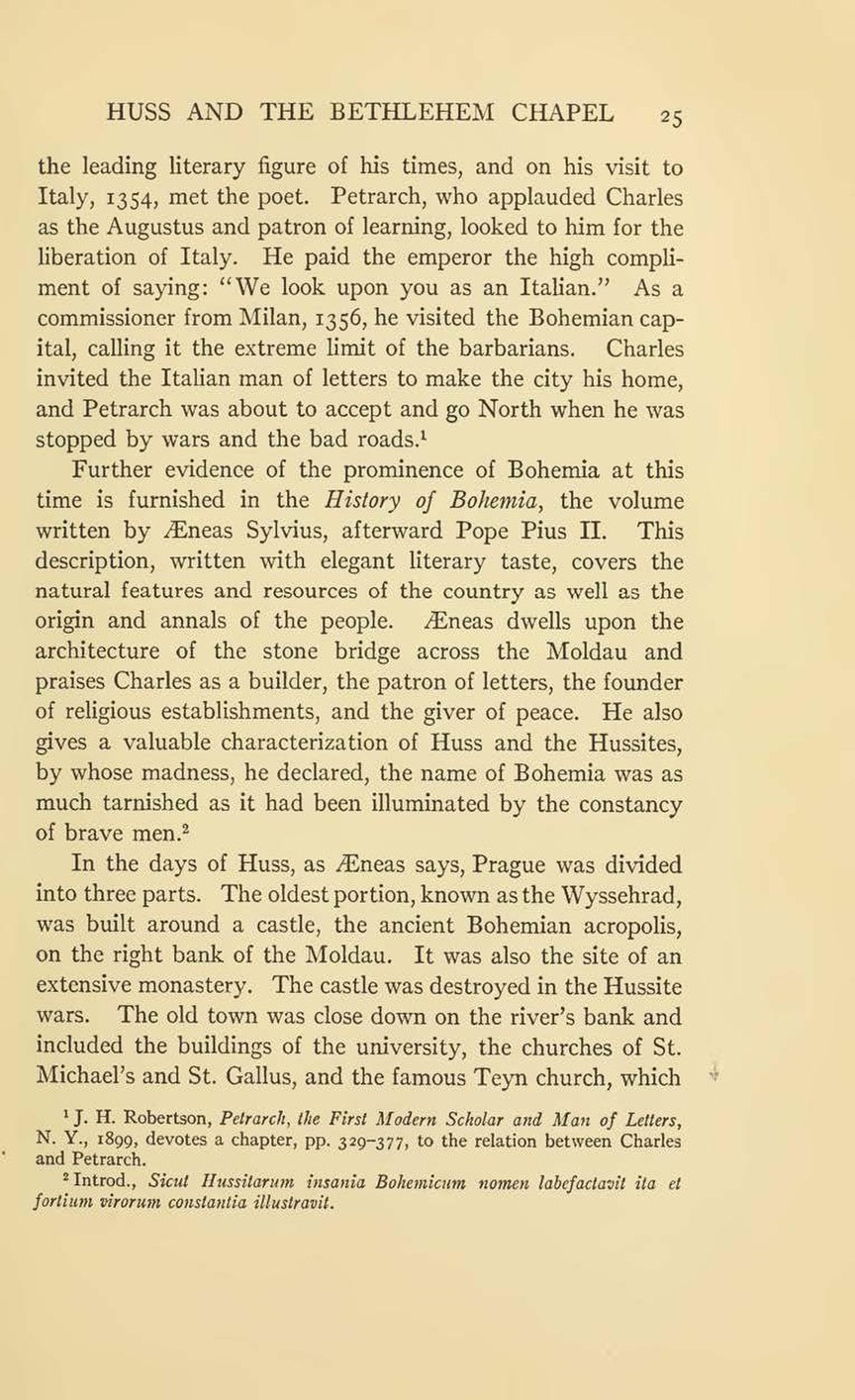the leading literary figure of his times, and on his visit to Italy, 1354, met the poet. Petrarch, who applauded Charles as the Augustus and patron of learning, looked to him for the liberation of Italy. He paid the emperor the high compliment of saying: “We look upon you as an Italian.” As a commissioner from Milan, 1356, he visited the Bohemian capital, calling it the extreme limit of the barbarians. Charles invited the Italian man of letters to make the city his home, and Petrarch was about to accept and go North when he was stopped by wars and the bad roads.[1]
Further evidence of the prominence of Bohemia at this time is furnished in the History of Bohemia, the volume written by Æneas Sylvius, afterward Pope Pius II. This description, written with elegant literary taste, covers the natural features and resources of the country as well as the origin and annals of the people. Æneas dwells upon the architecture of the stone bridge across the Moldau and praises Charles as a builder, the patron of letters, the founder of religious establishments, and the giver of peace. He also gives a valuable characterization of Huss and the Hussites, by whose madness, he declared, the name of Bohemia was as much tarnished as it had been illuminated by the constancy of brave men.[2]
In the days of Huss, as Æneas says, Prague was divided into three parts. The oldest portion, known as the Wyssehrad, was built around a castle, the ancient Bohemian acropolis, on the right bank of the Moldau. It was also the site of an extensive monastery. The castle was destroyed in the Hussite wars. The old town was close down on the river’s bank and included the buildings of the university, the churches of St. Michael’s and St. Gallus, and the famous Teyn church, which
- ↑ J. H. Robertson, Petrarch, the First Modern Scholar and Man of Letters, N. Y., 1899, devotes a chapter, pp. 329–377, to the relation between Charles and Petrarch.
- ↑ Introd., Sicut Hussitarum insania Bohemicum nomen labefactavit ita et fortium virorum constantia illustravit.
